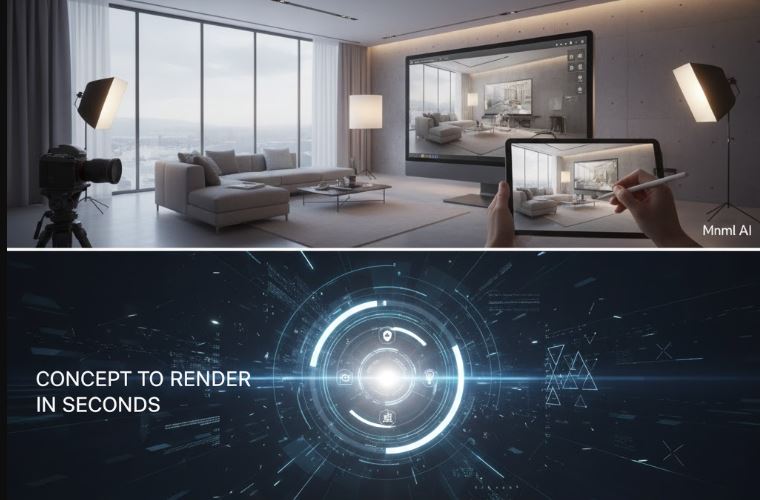In the competitive digital landscape, where ideas demand more resources to create and launch. MVP apps allow developers to start from small and improve on the go. Launching an app with full-scale development demands more cost and expertise and is time-consuming, which can be overwhelming for startups and small businesses. MVP is the basic version of an application that delivers the whole usability with its essential core features. The primary purpose behind this development is to know the concept’s validity and gauge interest in the market without spending expensive costs. This stripped launch reduces failure risks and upfront costs for app development. Ongoing improvements in MVP features allow developers to target users’ needs and gain more retention without spending heavily on startup.
Key Objectives of MVP Development
- Faster Time to Market: Full-scale development requires a more extended period for feature enhancement. Whereas MVP provides the advantage of quick launching. Its essential feature development process is easy, cutting down on marketing time. This faster marketing allows for evaluating the ideas’ worth through real-world feedback. Users get early attachments with the MVP app, and ideas start to generate their market value in competitive market dynamics. Quicker development of essential features and faster marketing allow developers to get their apps into users’ hands.
- Reduced Risk and Cost: A fully featured app with advanced technology demands more time, costs, and resources. Conversely, an MVP can solve users’ problems with essential core features that can be designed quickly and on a low budget. MVPs also reduce the risk of potential loss because releasing a basic version. This allows for testing the audience’s reaction and success rate in a competitive digital market. Suppose the basic version does not align with user needs or does not provide the expected success rate. In that case, developers have enough resources and time to shift their expertise to different niches.
- Real-World Feedback: A trial version of the MVP app allows the developer to identify the application’s strengths and weaknesses based on real-world feedback. Assumptions about the audience’s needs and preferences can prove wrong in a full-scale launch; MVP allows startups to make data-driven decisions. User-based input and integration of innovative minds guide to making functionality adjustments and feature enhancement.
- Flexibility for Iteration: The most attractive feature is the adoption and optimization of MVP according to users’ feedback. This helps to identify the actual needs and interests of the target audience and add new features according to this comprehensive assessment. It reduces unnecessary features and adds demanding ones, maximizing traffic and user retention. This flexibility for enhancement allows developers to maintain the app’s relevancy and ensure long-term success.
Benefits of MVP Development
- Validating Business Ideas: A fully developed app launch is a complex and time-consuming task with high market risks because the audience’s interest is rapidly shifting. An MVP option reduces these risks and allows developers to evaluate an idea’s validity by launching a simple version of an app. It helps to know whether developed features can impress the target audience. This timely validation guides toward the right track for investing resources and time, giving the confidence to create an app that meets market needs and builds a potential audience.
- Avoiding Wasted Resources: One of the most significant benefits of introducing MVP is resource-saving, focusing only on features essential to solving users’ everyday problems. Avoiding unnecessary formalities and advancements saves developers time, cost, and resources for validating ideas. This cost-effective approach helps to invest only in result-driven features that enhance functionality and user experience. Preventing useless spending and saving efforts for meaningful projects prove profitable and impactful.
- Building Momentum: MVP is the easiest way to construct timely momentum in a competitive market. Early launching of a functional app with all core functions about users’ needs starts gaining attention, impressing users, and bringing secured feedback for developers. This fast processing method guides the owner to improve the demanding functions and add enhancements according to the audience’s demand. It helps to earn reliability and increase market worth by introducing user-centric features.
- Optimizing Development Efforts: MVP guides concentrate on user-centric development efforts that draw a maximum audience in a short time by delivering satisfied functionality. Real-time feedback helps to identify the drawbacks and the features that truly impact the target audience. Iteration launch lets you stay on the right track and earn long-term success.
Steps to Develop an MVP
- Identify Core Features: MVP deals with the basic app version having limited features; therefore, the first and most crucial step is to decide its must-have features. Developers must have a detailed knowledge of the target audience and purpose of app development. It helps to determine the core features. For example, to develop an educational MVP, the developer must know the targeting phase of education and the syllabus to add to the app.
- Build a Functional Prototype: The next step is to develop functional mockups and wireframes that can solve users’ problems. The prototype should be simple and usable to express the essential functions in MVP. Developers should focus on introducing easy-to-navigate and interactive demos for users that can be operated without distraction. The prevention of unnecessary features helps enhance usability and functionality.
- Launch and Gather Feedback: MVP should be released in the selected user groups to gather real-time feedback about its functionality and core features. User-based qualitative and quantitative feedback helps to determine their reaction, inform them about their concerns, and provide a clear roadmap for valid and failed ideas. Developers can use in-app analytics and user surveys or conduct interviews to collect authentic information about the launched MVP.
- Iterate and Improve: The final and essential step is to apply, refine, and improve strategies according to received feedback, such as fixing the reported bug issues, adding or removing the features according to user demand, and improving the overall functionality to get a satisfactory user experience. Continuous ongoing optimization ensures that the product evolves according to user demand and fulfills users’ needs without distraction.
Real-World Examples
- Instagram: The globally famous app started with a simple launch, offering basic functionalities for sharing pictures. Initially, users can upload their photos using the app’s filters and share them with friends. Stories, direct messages, and video-sharing features were added later on according to the users’ demand and industry trends. The app gained popularity and user retention by launching the core features of photo sharing with simple navigation. Its ongoing optimization and feature enhancement based on user feedback evolved it into a universally recognized app.
- Sleep Number Bed: This app introduced itself with the concept of customizable beds. Initial features were about adjustable firmness, allowing users to customize the firmness of all sides of the bed. However, in proving the concept’s validity, advanced features such as integration with health apps, sleep tracking, and intelligent controls enhanced its functionality and technical proficiency. Focusing on the core features, this MVP successfully tested the idea and evolved it into a user-engaging application.
Final Analysis
Developing a Minimal Viable Product is a beneficial and secure way for small businesses to invest their resources and time in less risky launching. It validates the concepts in short investment and quick release, which helps to gain user attention with all core features that have easy navigation and the ability to resolve users’ daily problems. Contact Tech companies for expert advice and tailored solutions to build MVP showcasing your conceptual approach into core features. Take a start-up to test your ideas and evolve them effectively for maximum outcomes.






One thought on “What is the Purpose of MVP App Development?”
Comments are closed.